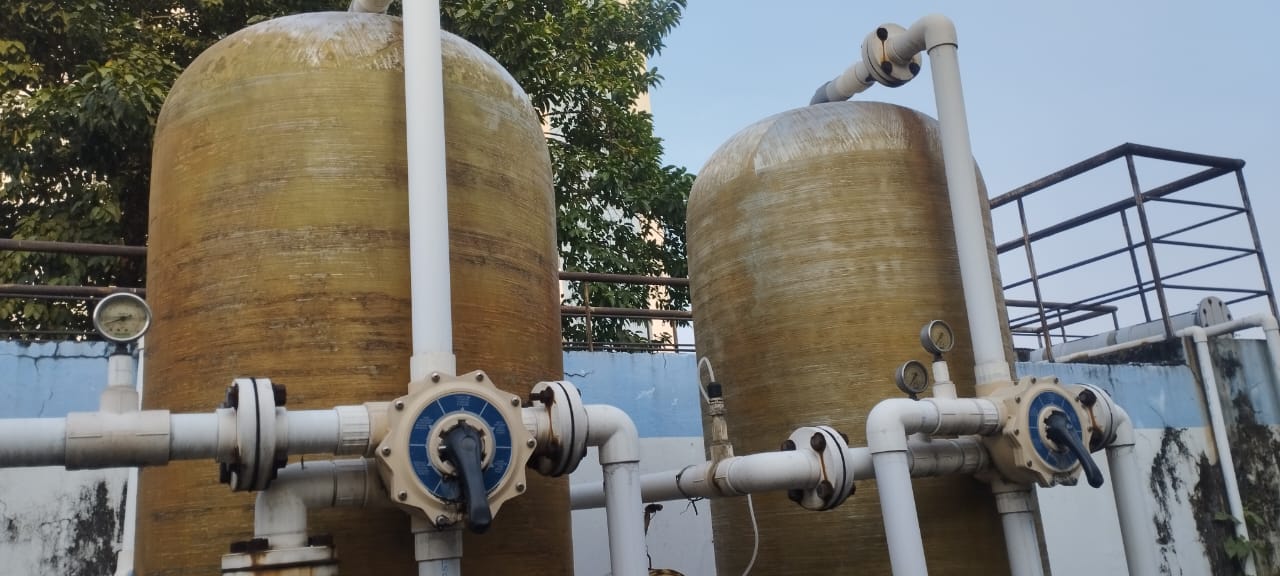Effluent Treatment Plants (ETP)
Effluent Treatment Plant Design
The design of an Effluent Treatment Plant (ETP) depends on two critical factors: the quality and quantity of wastewater generated by industries and the availability of land. When space is limited, a Common Effluent Treatment Plant (CETP) is often recommended over a standalone ETP to optimize resources.

Key Technologies in ETP
1. Pre and Primary Treatment
This stage involves the removal of coarse solids, oils, and suspended organic matter. It includes:
a) Bar Screen
A bar screen is the first line of defense in wastewater treatment, designed to filter out large objects such as rags, plastics, and sticks. Typically installed at the plant’s inlet, it protects downstream equipment from potential damage by removing debris.
b) Oil and Grease Trap
This system captures oil, grease, and food particles before they enter the sewer system. Commonly used in industries like food processing and hospitality, it prevents clogging and ensures cleaner wastewater discharge.
c) Dissolved Air Flotation (DAF)
DAF is a clarification process that removes suspended solids, oils, and other contaminants. By introducing fine air bubbles, pollutants are floated to the surface for easy removal. Widely used in industries ranging from food processing to oil refineries, it ensures high-quality wastewater treatment.
d) Mixing, Flocculation, and Settling (MFS Unit)
This system uses a multi-step process to enhance the removal of suspended solids. Flocculation improves particle aggregation, making it easier to settle and separate solids from the water.
2.Secondary Treatment
Secondary treatment focuses on reducing biodegradable organic matter (BOD) and total suspended solids (TSS) using biological methods.
a) Activated Sludge Process (ASP)
This widely used method employs microorganisms to decompose organic matter in wastewater. Aeration systems enhance the process, promoting faster breakdown. ASP requires a reliable power source to run aerators and pumps for sludge recirculation.
b) Extended Aeration
An advanced form of ASP, extended aeration optimizes aeration rates for longer periods. It efficiently treats wastewater and produces less sludge, making it suitable for smaller plants with minimal maintenance needs.
c) Moving Bed Biofilm Reactor (MBBR)
MBBR uses biofilm-coated carriers within an aerated tank to treat wastewater. It offers high efficiency, flexibility, and compact design, making it ideal for industries requiring robust treatment systems.
d) Sequencing Batch Reactor (SBR)
SBR treats wastewater in batches within a single tank, carrying out all treatment processes sequentially. It’s known for its high efficiency and ability to handle fluctuating wastewater loads.
3. Tertiary Treatment
This stage ensures further purification to meet strict water quality standards.
a) Filtration Systems: PSF, ACF, and MGF
Pressure Sand Filter (PSF): Removes suspended particles and turbidity using layers of sand.
Activated Carbon Filter (ACF): Eliminates odors, colors, chlorine, and organic impurities using activated carbon.
Multi-Grade Filter (MGF): A multi-media filter combining sand, gravel, and anthracite for comprehensive contaminant removal.
b) Ultrafiltration (UF) and Reverse Osmosis (RO)
UF: Employs a semi-permeable membrane to separate high molecular weight solutes and solids.
RO: Removes salts, minerals, and other impurities, making water suitable for reuse or safe discharge.
c) Ozone Treatment
Ozone is a powerful oxidizer that disinfects water by neutralizing bacteria, viruses, and other microorganisms. Its oxidation strength also removes stubborn metals and enhances water clarity.
d) Chlorination System
Chlorination is the most common disinfection method, effectively killing pathogens and ensuring safe water.
Our Value Addition
Maximized Recovery: Our systems are designed for optimal water recovery and minimal waste.
Tailored Solutions: Each system is evaluated to match your specific requirements.
Efficient Design: Ensures performance, reliability, and longevity.
Premium Materials: High-quality components guarantee durability and effectiveness.
Expert Installation: Our skilled team ensures seamless setup for consistent operation.
Unwavering Support: We offer ongoing maintenance and support for long-term performance.
By combining innovative technologies and expert engineering, our ETP solutions deliver sustainable and efficient wastewater management tailored to your industrial needs.

